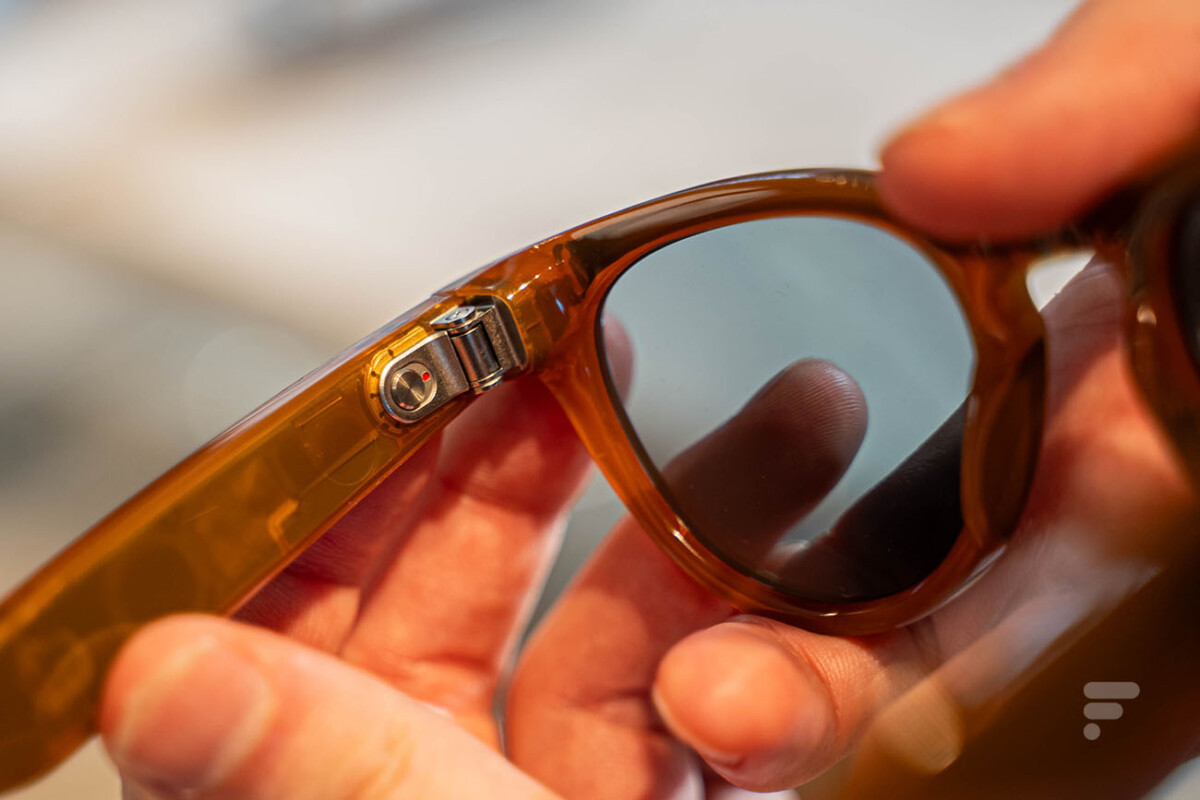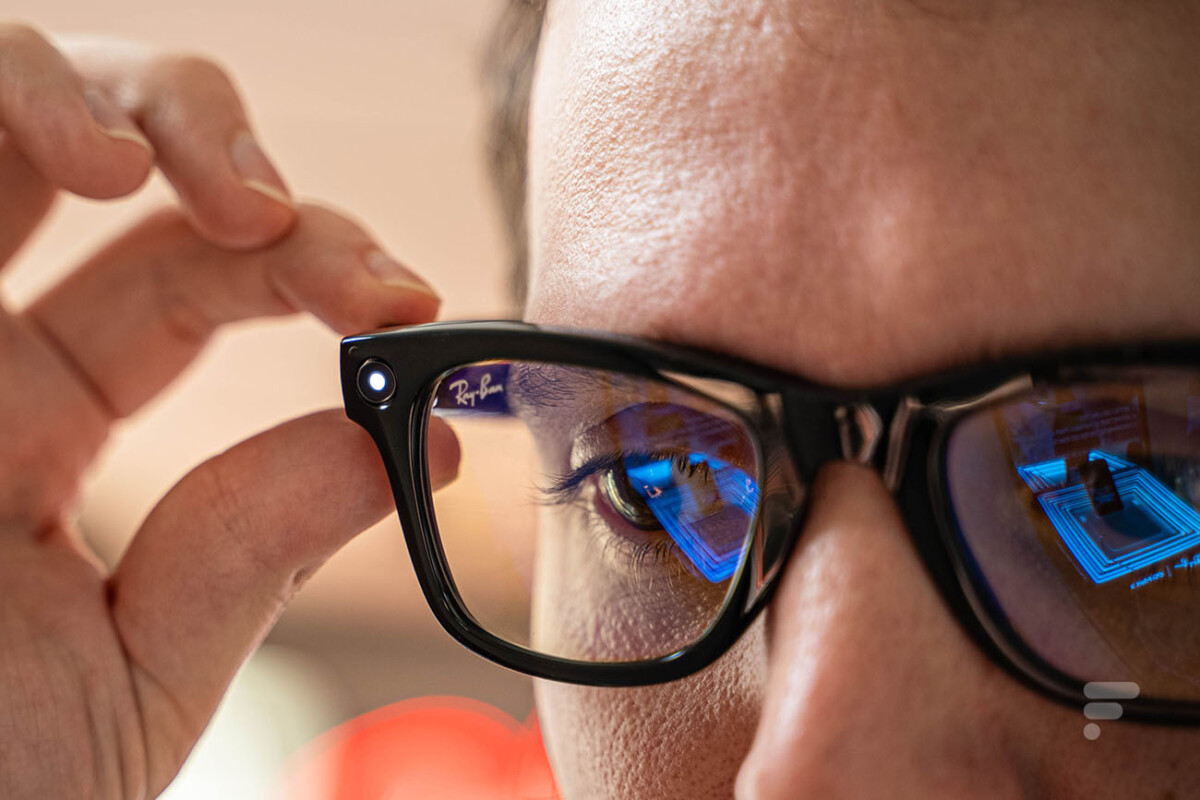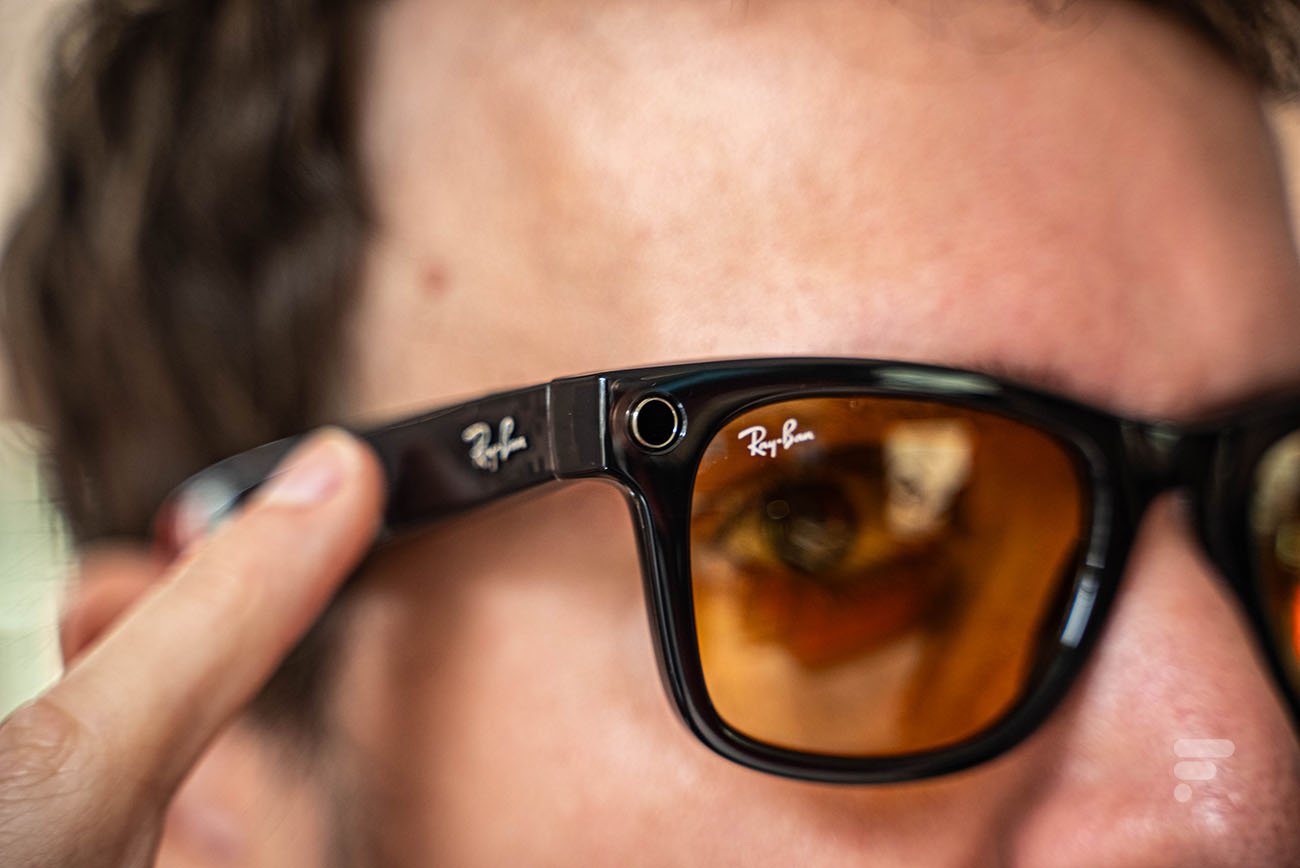Just released, the Ray-Ban Meta are the second generation of audio and video connected glasses from Meta. We were able to take them in hand… or rather by the ears and nose.
At the end of September, during its Meta Connect conference, Meta unveiled its Ray-Ban Meta, the glasses which succeed the Ray-Ban Stories of 2021. On the program, we find similar functions with the possibility of filming, taking photos or listen to music, but all in a much more elegant design.
Glasses with a refined design
It must be said that the first Ray-Ban Stories were rather heavy, weighing 49 grams. Above all, this weight was not distributed in the most balanced way and users were quick to criticize them for their tendency to tip forward. Meta and Ray-Ban seem to have heard these criticisms for the new Ray-Ban Meta. The glasses can now, at least from the front, be confused with real classic glasses from the American brand. In my case, I had the opportunity to try the Ray-Ban Meta in the Wayfarer model, while comparing them with my own pair of Wayfarers. With the exception of the photo modules (left) and LED (right), the two pairs look exactly the same.


The most picky will still notice the thickness of the temples or the frame, slightly thicker than on traditional models.
This new version of the glasses also includes similar controls with a slider power on at the hinge, on the left, a touch control to adjust the volume or change music tracks with a slide on the branches, and the capture of photos (single press) or videos (long press) on the button positioned above the right branch.

Finally, to finish on the design, the Ray-Ban Meta can obviously have their lenses modified, in particular to integrate optical lenses. These are not augmented reality or virtual reality glasses, but simply connected glasses, halfway between Snap Spectacles (for capturing images) and Bose Frames (for playing music and phone calls).
Photo and video improvements
If there is something better in terms of design, the performance of the Ray-Ban Meta has also been increased compared to the first generation. For video, they are capable of filming sequences in Full HD 1080p, compared to 720p previously. For photography, the glasses have a 12 megapixel sensor, compared to 5 megapixels for the previous version. Enough to allow sufficiently detailed shots for most cases.

The main novelty of the Ray-Ban Meta actually lies in their ability to stream to one of Meta’s social networks: Instagram or Facebook. When the glasses are connected to the smartphone, they can broadcast lives of up to 30 minutes. Certainly, the duration is a little short and the compatible platforms limited, but it is still better compared to the first version. However, we hope that the limit will subsequently be extended beyond half an hour and that Meta will allow broadcasting to other platforms such as Twitch, YouTube or TikTok. For the moment, however, nothing is planned in this area.
For classic videos too, Meta has limited their duration, since it is not possible to record sequences of more than a minute. Here too, it’s a shame and it’s hard to understand this limitation. If the glasses can broadcast live for 30 minutes, why not allow 30 minutes of local recording? Especially since the integrated storage, 32 GB, should be more than enough for a Full HD video.

Let’s also note a small, minor, but rather welcome update: the recording LED. When you film or take a photo with the Ray-Ban Meta, an LED located to the right of the right lens will light up white. This was already the case on the first version, but some clever people made sure to hide it to film without the people around them realizing it. Now, if the LED is hidden, Meta promises that the recording will automatically cut off. That’s always the case.
Glasses without AI
Unfortunately, at launch in France, the Ray-Ban Meta are not compatible with Meta’s AI voice assistant function, the aptly named Meta AI. It must be said that this is currently only available in English. This new version of connected glasses therefore looks above all like an improvement here and there of the first generation. Certainly, the sensors and speakers are of better quality. Of course, it is possible to broadcast live. Certainly, they are more comfortable. But it remains to be seen if this will be enough to convince after Ray-Ban Stories which had difficulty finding their audience.
The Ray-Ban Meta are available in France at a price of 329 euros in two formats, Wayfarer and Headliner, and in multiple colors.
